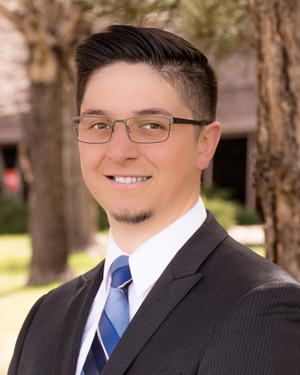 Herman Lovato
Herman Lovato
Director of support services
Centura Health
Centennial, Colorado
About Herman Lovato:
Herman Lovato was born at the now-closed Fitzsimons Army Medical Center, while his father was desert training outside of Camp Pendleton, California. His childhood school had a relationship with Porter Adventist Hospital, where his aunt worked as an ICU RN. After graduating high school, a family friend who worked at Porter got him an entry-level position delivering and cleaning hospital equipment, which supported him through college.”
He worked for Blockbuster rentals. “It was there that I learned the importance of relating to customers, creating an experience, and valuing the person. I believe supply chain has a big part in creating the experience for patients and providers.
As the director of support services for Centura Health, Lovato supports multiple non-clinical service lines and enterprise strategies that span supply chain, clinical engineering, laboratory services, pharmacy, nutritional services and facility maintenance. Outside of enterprise responsibilities, he oversees operations for the supply chain outpatient provider office network, Littleton Adventist Hospital Supply Chain and Littleton Adventist Hospital Nutritional Services.
About Centura Health:
Centura Health is a network of neighborhood health centers, mountain clinics, urgent and emergency care facilities, 100+ physician practices, and 17+ hospitals throughout the states of Colorado and Kansas.
Most challenging/rewarding project in the past 12-18 months:
“One of my biggest successes was establishing a support team and partnership with the outpatient provider network of facilities, which once exceeded 300 offices. Visibility to provider offices’ spend increased by 95%, allowing our team to put together sourcing and purchasing strategies across the enterprise. One of these strategies included pharmaceutical spend, which accounted for 70% of total spend. Partnering with Pharmacy to highlight the areas of opportunity justified hiring a dedicated pharmacist to establish a pharmaceutical and therapeutics committee dedicated to outpatient provider pharmacy opportunities. Our teams have partnered to provide valuable data analytics, visualization tools, and implement a number of highly impactful changes to our formulary.”
Looking forward to:
“I was inspired early in my career by the potential and opportunity to strengthen partnerships outside of the supply chain. It’s through these partnerships we can continue to improve patient outcomes, create a patient-centered experience, cut unnecessary costs, and support patients and staff.
“One of my goals over the next year is to … develop a successful strategy within nutritional services. I would like to support dieticians and nurses by developing lean processes, ensuring we get product to the patient floors, seeing that it’s well managed, making sure we have no issues with expiration dates. We can provide tools, and, they – as experts in the field – will determine how to use them.”
How are you better at practicing your profession than you were 5-10 years ago?
“There has been a significant change in the practice of supply chain over the years. The industry is not only more equipped to capture data, but has also improved the way we visualize it. Bridging the gaps between purchasing data and clinical data has strengthened relationships between clinical teams and has directly impacted supply chain’s ability to contribute to patient outcomes and quality care.
“The importance of data has also increased the accuracy of information, putting an emphasis on building items into the item master, developing facility-specific item lists to manage approved items, and collecting information during a patient encounter. Each item attribute impacts how data is used to make decisions and in healthcare system billing, which directly impacts revenue.
“Supply chain front-line staff also use more technology and tools then ever before. Ten years ago, we were happy to scan and manage par inventory. Now we have grown to focus even more on the origination and routine maintenance of par inventory. Every front-line member is able to review purchase history reports that provide item run rates and recommend a five-day and seven-day par.”
What are the challenges or opportunities facing the next generation of supply chain executives?
“I am excited for the future of supply chain, and see opportunities to build partnerships and demonstrate the value that supply chain professionals bring to the healthcare industry. However, there are challenges.
“Every supply chain professional must prepare for the pressure between rising costs of goods and services, and finding creative solutions to deliver results. In some cases we can create the competition and negotiate competitive pricing, and in others the industry allows for price gouging. There are many variables that play into pricing, and there are challenges with getting a product to the market. However, it is ultimately the patients who suffer.”
